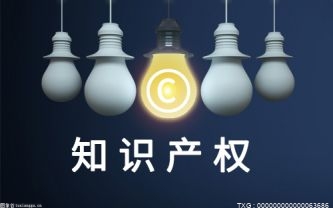We know that copyright infringement is an act that violates the copyright law and infringes the rights of copyright owners. Patent infringement is an illegal act of infringing a patent for the purpose of production and operation without the permission of the patentee. For example, the act of passing off another's patent or the act of passing off another's patent. What is the difference between copyright infringement and patent infringement?
1、 Different constitutive elements
Copyright infringement must meet the following three conditions:
1. The fact of infringement means that the doer uses the copyright owner's works, performances, audio-visual products and radio and television programs without the permission of the copyright owner and without complying with the conditions for use stipulated in the Copyright Law. The act of copyright infringement neither obtains the consent of the author and other copyright owners, nor is it a case of fair use or statutory use. It is an unauthorized use of a work, and therefore a violation of the copyright law.
Such infringement may not only damage the personal rights of others' works, but also damage the property rights of others' works, and may also damage the personal rights and property rights of others' works at the same time. For example, illegal copying of other people's works may only infringe on the copyright property rights of others, while counterfeiting of other people's works often infringes on the personal rights and property rights of other people's works at the same time.
2. The act of illegal copyright is an absolute right, and anyone is responsible for the obligation of omission not to infringe this right. When others use copyrighted works, they must abide by the Copyright Law and other laws. If the perpetrator violates the laws, his act is illegal. As for works that are not protected by China's copyright law, works that have not obtained copyright, or "works" that have entered the public domain, others do not have infringement problems when using them.
3. The subjective fault of the perpetrator refers to the mental state of the infringer regarding his tort and its consequences, including intentional and negligent forms. The vast majority of copyright infringement acts are intentional; There are also a few that can be formed by both intent and negligence. Distinguishing the form of fault has certain significance in determining the legal liability of infringers. Generally speaking, the legal liability of intentional tort is heavier than that of negligent tort.
2、 The elements of patent infringement include two aspects: formal conditions and substantive conditions. Among them, the formal requirements and legal responsibilities mainly include:
1. The implementation involves a valid Chinese patent.
2. The act of exploitation must be carried out without the permission or authorization of the patentee.
3. The implementation must be aimed at production and operation. Whether the actor has subjective intention is not a formal requirement. However, it can be used as a basis to measure the seriousness of the plot. The essential elements of patent infringement, that is, the technical conditions, and whether the substantive implementation belongs to the scope of patent protection.
3、 If the technical features involved by the actor belong to the scope of patent protection, then the actor constitutes a patent infringement. It mainly has the following forms:
1. If the technical features involved by the doer are all the same as those of the patent, it constitutes infringement.
2. The technical features involved by the actor are more than those of the patent, which also constitutes infringement.
3. Where the technical features involved by the actor are the same as or different from those of the patent, but the different technical features are equivalent to those of the patent, which still constitutes infringement; Otherwise, it will not constitute infringement.
Here, the equivalence of technical features means that ordinary technicians in the technical field can infer that two technical features have the same effect after they are replaced with each other.







